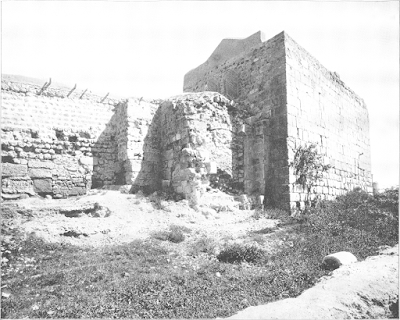Place Where St. Paul Was Let Down
Paul was not destined to be the evangelist of the East. His retirement in Arabia was not of long continuance. The time from his conversion to his final departure from Damascus is said not to have exceeded three years. Meanwhile, he had returned to Damascus, preaching boldly in the name of Jesus. The Jews, being no longer able to meet him in controversy, resolved to assassinate him. All due precautions were taken to evade the danger, for Saul had become acquainted with the conspiracy. The Jews watched the gates of Damascus to waylay and destroy Saul. The church continued in prayer for him. In the night from some overhanging house he was let down from a window in a basket. Along the southeast angle of the wall of Damascus is Bab Kisan—a gate which has been walled up for many centuries, and the wall has been rebuilt several times. Monkish tradition still points to the wall between the round tower and the gate west of it as the place from which Saul was let down at the time of his escape from the hands of the governor. The monks have recently located in this vicinity the spot where Saul was converted. In front of this gate is a tomb, said to be that of St. George, who aided the apostle in his flight. The walls of the old city could not contain the apostle; the enemies who had the open gates watched day and night could not arrest and slay him, because he had a mission beyond Damascus, beyond Jerusalem, beyond Antioch, beyond Ephesus, beyond Macedonia, beyond Athens and Corinth; for in the city of Rome itself he was destined to proclaim the Gospel of the crucified Nazarene.

Comments